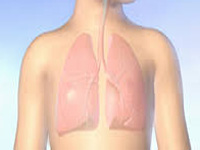Cockroaches survived much more than humans Fruit flies, flour beetles tougher than cockroaches Last year, the Myth Buster TV team from the Discovery Channel announced that they would find out experimentally whether cockroaches would be the only living form to survive a nuclear war (The Hindu, November, 1, 2007). On January 30, this year (Episode number 97), the team busted the myth which was in their priority list from day one. The announcement that the myth buster team will conduct an experiment received wide media coverage; surprisingly, the media virtually ignored the results of the experiment. The experiment The staff of the Pacific Northwest National Laboratory at Hanford site (U.S.) assisted the team to expose three groups of German cockroaches (50 each) to 1,000, 10,000 and 100,000 rads of gamma radiation using an irradiator located in the basement of a building at Hanford. The fourth group of 50 cockroaches served as control... (Rad is a unit of radiation dose; a dose of 450 rads may kill 50 per cent of the persons exposed). They exposed similar groups of 50 flour beetles and 100 fruit flies which represented other living forms to similar doses. Many bugs initially survived after receiving 1,000 rads and 10,000 rads . However, only some flour beetles survived after receiving a dose of 100,000 rads. Fruit flies and flour beetles are found to be tougher than cockroaches. For instance, on the second day after receiving 100,000 rads, all the cockroaches died; 40 per cent of the fruit flies and 90 per cent of the flour beetles survived. The survivors will be infertile. "While cockroaches survived much more than the humans would, the other two test subjects did better than the cockroach,' the TV channel declared. They concluded that they busted the myth since, more life forms than cockroaches survived! The spectators' reactions to the TV programme, revealed how differently the common man understands radiation related concepts. Is it safe to go into the room after cobalt irradiated the bugs? A viewer wanted to know. The questioner wrongly felt that irradiation with cobalt will leave the room radioactive! One viewer objected to the use of cobalt radiation to irradiate the bug. "Considering that the myth was "will cockroaches survive a nuclear blast' shouldn't they have used uranium-238?' he queried. "I believe that this is the substance used in modern day nuclear weapons,' he argued. (Obviously he did not understand the difference between radiation from a nuclear weapon and that from uranium-238). It was equally wrong on the part of the TV channel to claim that they are exposing the insects to a nuclear blast when they actually exposed the bugs to gamma radiation from a cobalt source. The survivability of cockroaches in a nuclear war has been a topic of interest for several years. Based on the work of Hassett and Jenkins (Nucleonics, 1952),Professor John Moulder, Professor of Radiation Biology, Medical College of Wisconsin, noted that about 900-1,000 Gys are needed to kill a cockroach (one Gy= 100rads); more dose is required if the dose is delivered at a slower rate. The claim that not enough scientific data are available is not true. Strong evidence In 1957, Drs Wharton and Wharton found that 1,000 rad can interfere with the fertility of cockroach. In 1963, Drs Ross and Cochran found that a low dose of 6,400 rad would kill 93 per cent of immature German cockroaches. Inspite of such unimpeachable evidence on its radiation-vulnerability, the myths about this unlovable creature may survive, not withstanding the fame and popularity of the


